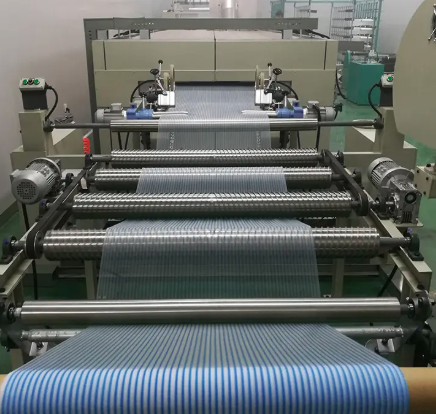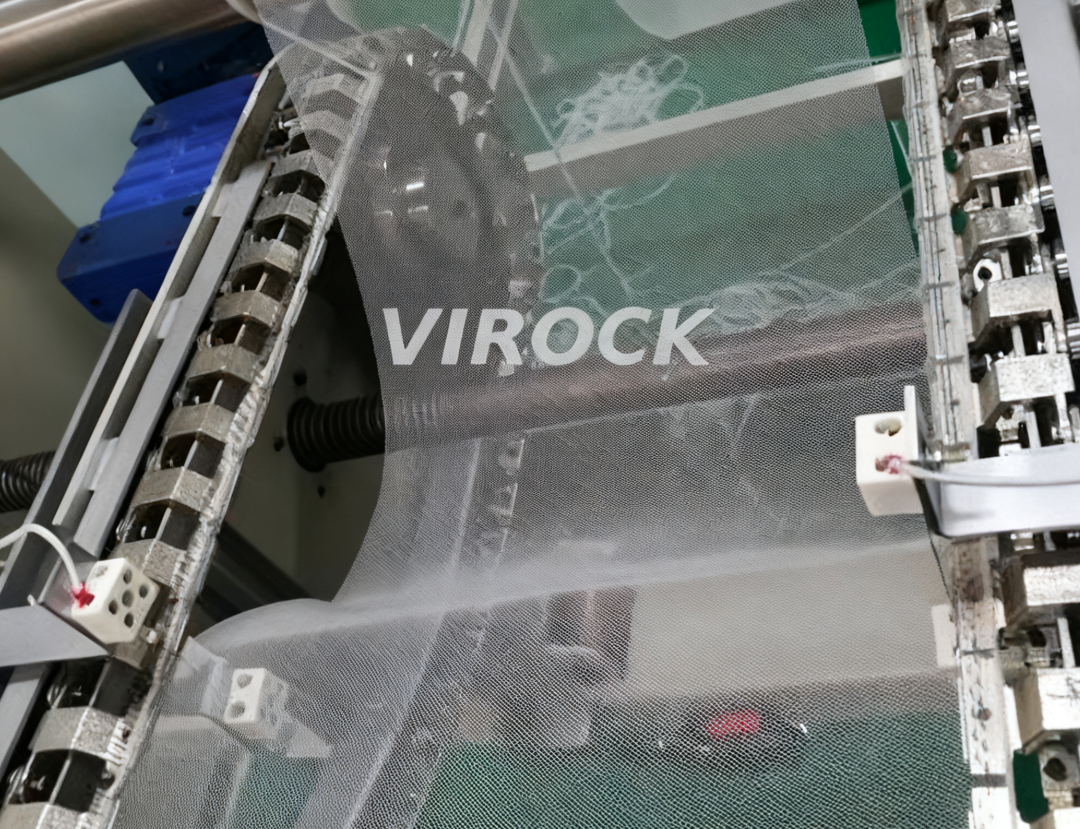Views: 0 Author: Site Editor Publish Time: 2025-10-20 Origin: Site








Medical textiles have become a cornerstone of modern healthcare, playing a crucial role in wound care, implants, hygiene, and protective equipment. But have you ever wondered how medical textiles are made? From the selection of fibers to advanced finishing techniques, the manufacturing process is both intricate and fascinating. In this article, we explore every aspect of medical textile production, applications, and innovations.
Medical textiles are specialized fiber-based products designed for medical purposes. They are a sector of technical textiles focusing on prevention, care, and hygiene. Examples range from simple cotton bandages to advanced tissue engineering scaffolds and implantable fabrics. The term also covers personal protective equipment (PPE) like masks, gowns, and gloves.
Medical textiles include a wide array of fiber types—natural fibers, synthetic fibers, biodegradable polymers, and advanced high-performance fibers—and a variety of fabric constructions including woven, knitted, braided, and nonwoven.

Implantable medical textiles are used inside the human body to replace or support tissues. Examples include vascular grafts, heart valves, artificial ligaments, and biodegradable sutures.
Key fibers and materials:
Polyester, PTFE: cardiovascular implants
Silicone, polyethylene: orthopedic implants
Polylactic acid (PLA), polyglycolide (PGA): biodegradable sutures
Chitin, collagen, PMMA: soft tissue implants
These materials are selected for biocompatibility, tensile strength, compliance, and specific anatomical performance. Advanced textile machinery ensures precision knitting, weaving, and braiding of fibers to create fabrics with the right pore size and mechanical properties.
Non-implantable medical textiles are applied externally. They include bandages, compression garments, orthopedic supports, and plaster materials.
Materials used: cotton, viscose, nylon, spandex, polyurethane.
Fabric constructions: knitting, weaving, and nonwoven methods.
These textiles must have properties such as softness, elasticity, air and water permeability, and comfort for extended contact with skin.
These textiles are essential for infection control and hygiene, including surgical gowns, masks, bed linens, and protective clothing.
Materials used: cotton, polyester, polypropylene, viscose.
Functional finishes: antimicrobial, antiviral, and water-repellent treatments improve safety and durability.
Human textiles involve bioengineered yarns from human cells, allowing the production of scaffolds and regenerative materials. These fabrics aid in wound healing, tissue repair, and surgical applications, minimizing immune reactions compared to synthetic materials.
| Type of Medical Textiles | Description | Key Fibers and Materials |
|---|---|---|
| Implantable Medical Textiles | Used inside the human body to replace or support tissues. | Polyester, PTFE; Silicone, polyethylene; Polylactic acid (PLA), polyglycolide (PGA); Chitin, collagen, PMMA |
| Non-Implantable Medical Textiles | Applied externally, including bandages, compression garments, orthopedic supports, and plaster materials. | Cotton, viscose, nylon, spandex, polyurethane |
| Hygiene and Healthcare Textiles | Essential for infection control and hygiene, including surgical gowns, masks, bed linens, and protective clothing. | Cotton, polyester, polypropylene, viscose |
| Human Textiles and Tissue Engineering | Involve bioengineered yarns from human cells for scaffolds and regenerative materials. | Bioengineered yarns from human cells |
Medical textiles use a variety of fibers and polymers, chosen for biocompatibility, strength, and application needs.
Cotton, silk, and viscose are widely used in non-implantable textiles and hygiene products. They offer softness, absorbency, and breathability, making them ideal for bandages, gowns, bed linens, and wipes. Cotton excels at moisture management for wound care, while silk is suitable for delicate sutures. Viscose combines natural fiber benefits with flexibility and uniformity.
Polyester, nylon, polypropylene, PTFE, and Dyneema are used for strength, durability, and dimensional stability. They are common in implantable fabrics, surgical meshes, and PPE. PTFE is ideal for cardiovascular implants due to its non-stick and inert properties. Dyneema provides high tensile strength for tendons and ligaments. Synthetic fibers can also be functionalized for antimicrobial, hydrophobic, or drug-delivery applications.
PLA, PGA, chitosan, alginate, and collagen are bioabsorbable, gradually breaking down in the body. They are used in sutures, stents, tissue scaffolds, and regenerative meshes. Chitosan and alginate also have hemostatic and antimicrobial properties, while collagen supports cell growth and tissue regeneration.
Fibers like Vectran, PTFE, and Teflon are applied in high-performance implantable devices requiring strength, chemical resistance, and biostability. Intelligent textiles with shape-memory or phase-change properties improve comfort, adapt to body movement, and support therapy, such as controlled thermal wraps or shape-retaining implants.
The manufacturing of medical textiles starts with careful selection of fibers tailored to the intended application. Fibers are chosen based on biodegradability, strength, elasticity, absorbency, and biocompatibility. For example, cotton and silk are preferred for hygiene and wound care, while PTFE, polyester, and Dyneema are selected for implants and structural devices.
Yarn preparation is a crucial step to ensure consistent quality and performance. It involves processes such as:
Splitting – separating fibers to achieve uniformity
Twisting – enhancing yarn strength and flexibility
Warping – arranging yarns for weaving or knitting
Heat setting – stabilizing fibers and controlling shrinkage
These steps ensure that the yarn meets the mechanical and structural requirements for its specific medical use, whether it is a suture, bandage, or implantable fabric.
Once the yarn is prepared, it is transformed into medical textiles using various fabric formation techniques, each offering unique properties:
Knitting
Types include warp knit, circular knit, spacer/pile knit, and tubular knit
Produces compliant, flexible fabrics that conform to anatomical movements
Reduces stress or discomfort when implanted or worn as medical garments
Tubular and 3D-shaped knits allow precise radial and longitudinal stretch for minimally invasive devices
Weaving
Includes leno weave, twill weave, and pile fabrics
Produces dimensionally stable textiles with high tensile strength, burst resistance, and precise pore sizes
Ideal for structural heart implants, vascular grafts, and barrier fabrics
Woven fabrics can achieve thin profiles and low porosity, enhancing implant functionality
Braiding
Used for ligaments, artificial tendons, stents, and vascular grafts
Provides isotropic stretch, high strength, and durability
Essential for applications where multi-directional forces are applied
Nonwoven Techniques
Methods include spunbond, meltblown, and electrospinning
Produce filtration materials, wound care fabrics, and PPE
Allow precise control over fiber diameter, porosity, and layering
Melt-blown fabrics are key for N95 masks, while electrospun nanofibers are used in tissue engineering scaffolds and advanced wound dressings
After fabric formation, post-processing and finishing enhance both performance and safety:
Heat Setting – stabilizes dimensions, controls compliance, and prevents deformation
Shape Forming – customizes fabrics to fit anatomical structures for implants or wearable devices
Fabric Condensing – reduces thickness while maintaining mechanical strength, enabling low-profile and minimally invasive devices
Trimming and Laser Cutting – ensures precision edges and reduces fraying
Suturing and Ultrasonic Welding – joins fabrics or integrates them with nonwoven layers, elastomers, or wires
Functional Finishing – includes antimicrobial, antiviral, softness, and compliance treatments, ensuring safety, comfort, and usability
These steps are essential for creating fabrics that meet clinical performance standards and regulatory requirements.
Modern medical textile production increasingly relies on advanced technologies to improve functionality and patient outcomes:
3D Printing – enables customized scaffolds and complex geometries for tissue engineering
Microfluidic Spinning – allows precise control of fiber alignment, diameter, and anisotropy
Melt-Blown and Electrospinning – produce micro- and nanofiber layers for filtration, PPE, and wound care applications
Intelligent Textiles – incorporate sensors to monitor heart rate, blood pressure, and movement for real-time patient data
Phase-Change Materials (PCM) – integrated into wraps, bandages, or orthopedic supports for controlled thermal therapy
Shape-Memory Polymers – allow fabrics to adapt to body movement or maintain specific forms in implants and wearable devices
By combining these processes and technologies, medical textiles can be precisely engineered for a wide range of applications, from simple bandages to highly specialized implantable devices.

Medical textiles are key for wound management, providing absorbent, hemostatic, and biocompatible dressings. Materials like chitosan, alginate, collagen, and hydrogel fibers help prevent infection, maintain moisture, and support healing. Some advanced dressings also include antimicrobial layers for extra protection.
Fibrous scaffolds in tissue engineering provide support for cell growth and tissue regeneration. Techniques like electrospinning and microfluidic spinning create precise fiber alignment and porosity, suitable for repairing skin, cartilage, vascular, or other tissues.
Medical textiles make PPE such as masks, gowns, and gloves. Antimicrobial and antiviral treatments reduce contamination risk, while breathable, multilayer fabrics ensure comfort and protection for healthcare workers.
Sutures can be absorbable or non-absorbable, monofilament or braided, tailored for tissue type and healing time. Bandages provide compression and support for veins, muscles, and joints, often with elasticity and antimicrobial properties.
Textiles are used in hospital linens, uniforms, bedding, and diapers. They offer absorbency, comfort, and infection prevention, with some including superabsorbent or antimicrobial layers to maintain safety and hygiene.
A: Medical textiles are fiber-based materials designed for healthcare applications such as wound care, surgical sutures, PPE, hygiene products, and tissue engineering. They combine biocompatibility, strength, and functionality for medical use.
A: Medical textiles use natural fibers (cotton, silk, viscose), synthetic fibers (polyester, nylon, polypropylene, PTFE), biodegradable polymers (PLA, PGA, chitosan, alginate, collagen), and high-performance specialty polymers (Vectran, Dyneema, Teflon). Materials are chosen based on biocompatibility, strength, absorbency, and biodegradability.
A: The process includes fiber selection and preparation, yarn processing (splitting, twisting, warping, heat setting), fabric formation (knitting, weaving, braiding, nonwoven), post-processing and finishing (heat setting, shape forming, condensing, trimming, suturing, ultrasonic welding), and integration of advanced technologies like electrospinning, melt-blown, and intelligent textiles.
A: Post-processing includes heat setting to stabilize fabric, shape forming for anatomical conformity, fabric condensing to reduce thickness, precision trimming and laser cutting, and fabric assembly through suturing or ultrasonic welding. Functional finishes like antimicrobial or antiviral treatments are also applied.
A: Precision ensures the fabric meets mechanical, structural, and compliance requirements. Accurate pore size, fiber alignment, and fabric strength are critical for implantable textiles, PPE, and wound care products to function safely and effectively.
Medical textiles play a crucial role in healthcare, from wound care and surgical sutures to PPE and tissue engineering. The materials, manufacturing processes, and finishing techniques all combine to ensure that these textiles meet the highest standards of biocompatibility, safety, and performance.
At VIROCK Textile Machinery Co., Ltd., we are proud to support the production of high-quality medical textiles through our advanced textile finishing machineries. As a leading textile finishing machinery manufacturer, we offer state-of-the-art equipment that ensures precision, efficiency, and consistency in every fabric processed. From pre-shrinking and stentering to heat-setting, polishing, and coating, our machinery is designed to meet the evolving needs of medical textile manufacturers worldwide.
With our expertise and innovative solutions, we help companies transform raw fibers into safe, durable, and high-performance medical textiles that improve patient care and advance healthcare outcomes.